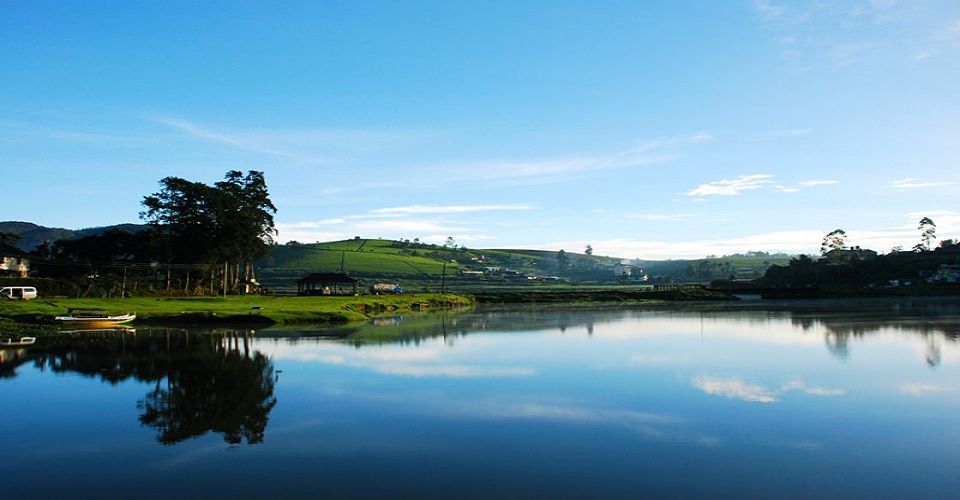Sri Lanka is a water destination – marine and fresh. The Indian Ocean that surrounds it and the innumerable natural and man-made lakes and ancient reservoirs make up an impressive aqua portfolio. Kings of ancient Sri Lanka built numerous reservoirs of monumental scale to irrigate paddy cultivation. They are the most substantial remains of the island’s ancient civilization, dating back to 600 BC. We are taking a look at some of the most stunning lakes and reservoirs of Sri Lanka to understand why they command such an iconic attraction.
Lakes and reservoirs of Sri Lanka
Bolgoda Lake
It is known to be Sri Lanka’s largest natural freshwater lake. Bolgoda is a best-kept secret and an underrated biodiversity hotspot. The lake covers two-thirds of the Kalutara district, a low-country wet zone area. It is 374sq km in size and 20-50 feet deep. A waterway from Kalu Ganga and the catchment from the surrounding areas and marshes are its main sources of water. The lake system is made up of a Northern and Southern portion, connected by the Bolgoda River. The lake drains into the sea at an estuary in Panadura. Its mangrove habitat is rich in flora and fauna. You can go on a full scenic boat ride around the lake.
Diyawanna Lake
This man-made lake, built in 1979, is in Sri Lanka’s capital, Sri Jayawardenepura Kotte. Sri Lanka’s parliament is situated at its centre. It contains eight islands and a park (Diyatha Uyana) built on its banks. The lake has a rich ecosystem of flora and fauna. Its wetlands, ponds filled with water lilies, shrub lands, and grasslands have attracted a number of aquatic and migrant birds. Birds easily spotted include Spot Billed Pelican, Indian Pond Heron, Purple Heron, Large White-throated Kingfisher, and the Little Cormorant. Beddagana is a designated wetland park for birdwatching. Among its aquatic flora, the South Indian Plum tree, a species almost extinct, is a notable highlight. A cycle track runs around the lake, and the banks are purpose-built for scenic relaxation.
Lake Gregory
Lake Gregory in Nuwara Eliya in the highlands is named after the British Governor Sir William Gregory, who commissioned its construction in 1873. It was made by damming the Thalagala stream, which originates from Mount Pidurutalagala, the highest mountain in Sri Lanka. It used to be stocked with trout. In 1913 the lake’s water was channelled into a tunnel that flows to a hydro power station, which continues to power the town to this day. As with British times, it is a prominent attraction for water sports and recreational activities. Opportunities for boat rides, pony rides around the lake, walks, and picnics are plenty.
Giritale Tank
Built by King Agbo II and believed to have been renovated by King Parakramabahu, the Great Giritale Tank was considered the deepest reservoir of medieval Sri Lanka. It was built during the 7th Century. The reservoir is located in Minneriya in the Polonnaruwa District, Sri Lanka’s second ancient capital. It is engineered to catch rainwater as well as to store water that cascades down the mountain. The tank is at the centre of Minneriya-Giritale, a roaming ground for large herds of elephants. It is also one of the designated 70 Important Bird Areas (IBAs) of Sri Lanka.
Minneriya Tank
It is one of the most ancient large reservoirs in Sri Lanka, built during the Anuradhapura Kingdom by King Mahasen. The king ordered a 13m tall dam built across the Minneriya River in the North Central Province to make the tank, which extends across an area of 4,670 acres (18.9 km2). In 1820, British colonisers renovated it and recorded that most of the original reservoir features were intact after nearly two millennia.
It is an important ancient irrigation system still used for cultivation. Elephants in the Minneriya National Park flock to drink from it and frolic in it. The tank sustains a large number of mammals, birds, reptiles, and amphibians living in and around the area.
Parakrama Samudra
It is so large it is called an ocean (samudra). With a surface area of 22.6 km², it is the largest ancient reservoir in Sri Lanka. Built by King Parakramabahu I, who was determined to “use every single drop of rain,” it consists of five separate small reservoirs (wewas). It is situated in Polonnaruwa, and its surrounding area is home to some amazing wildlife, not to mention historic ruins.
Kandy Lake
Kandy Lake is also known as Kiri Muhuda or the Sea of Milk. It was built by the last monarch of the island King Sri Wickrama Rajasinghe, in 1807. The tank is located in the Kandy city centre, next to the Temple of the Tooth. It has been reduced in size overtime. A variety of indigenous trees surround the lake, including Nuga trees, palm trees, Sal trees, and Mara trees. Bird species like the Indian cormorant, white egret crane, wood stork, and pelican are often seen on the lake.
Sri Lanka’s natural lakes and ancient man-made reservoirs that power irrigation systems are stunning. You can spend hours cruising along them, watching wildlife, and unwinding on the breezy banks. Blue Lanka Tours brings you the lesser-known panoramic lake experiences across the island, from Sri Lanka’s capital to the ancient kingdoms that once achieved remarkable engineering feats.

